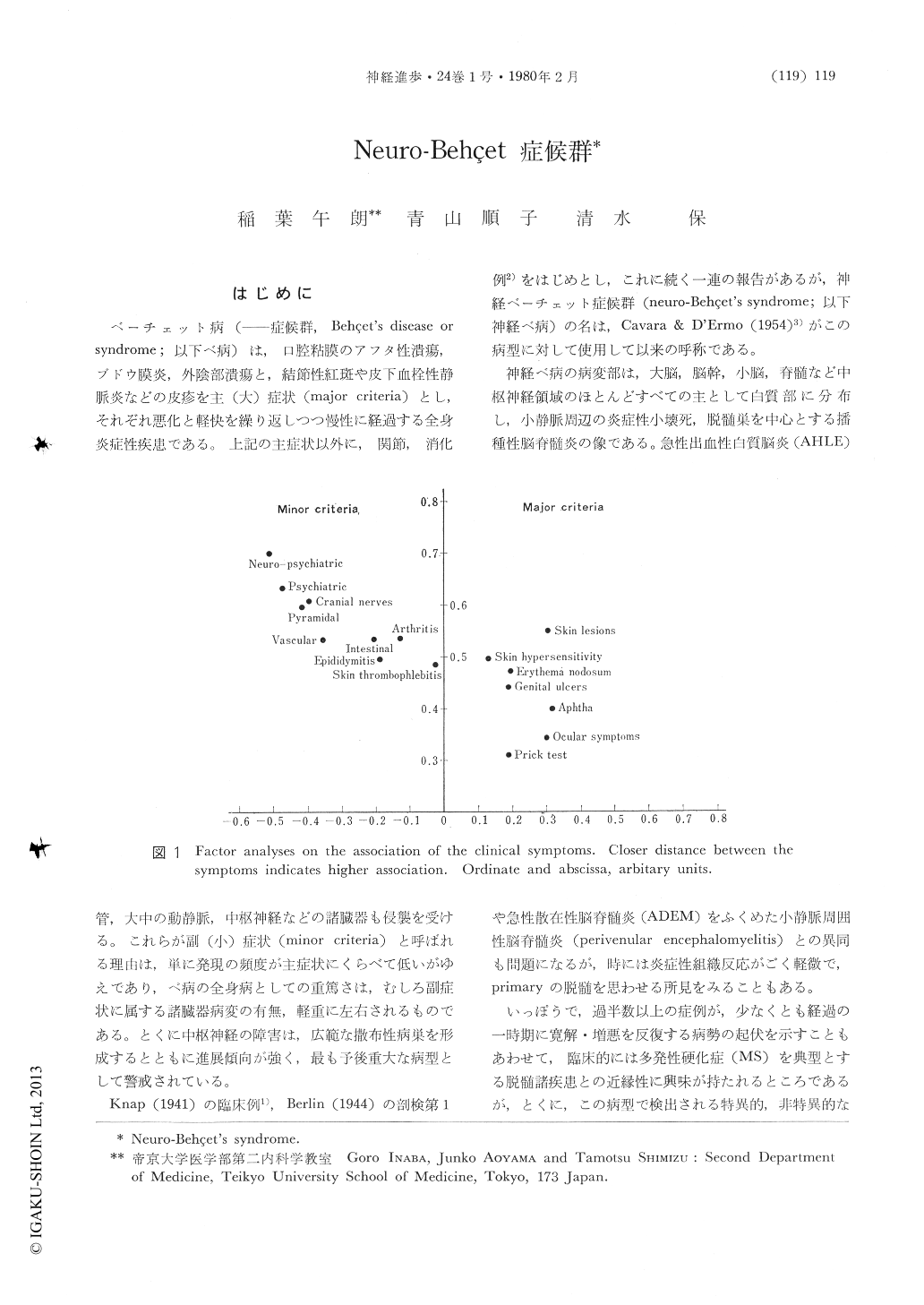Japanese
English
- 有料閲覧
- Abstract 文献概要
- 1ページ目 Look Inside
はじめに
ベーチェット病(―症候群,Behçet's disease or syndrome;以下べ病)は,口腔粘膜のアフタ性潰瘍,ブドウ膜炎,外陰部潰瘍と,結節性紅斑や皮下血栓性静脈炎などの皮疹を主(大)症状(major criteria)とし,それぞれ悪化と軽快を繰り返しつつ慢性に経過する全身炎症性疾患である。上記の主症状以外に,関節,消化管,大中の動静脈,中枢神経などの諸臓器も侵襲を受ける。これらが副(小)症状(minor criteria)と呼ばれる理由は,単に発現の頻度が主症状にくらべて低いがゆえであり,べ病の全身病としての重篤さは,むしろ副症状に属する諸臓器病変の有無,軽重に左右されるものである。とくに中枢神経の障害は,広範な撒布性病巣を形成するとともに進展傾向が強く,最も予後重大な病型として警戒されている。
Knap(1941)の臨床例1),Berlin(1944)の剖検第1例2)をはじめとし,これに続く一連の報告があるが,神経ベーチェット症候群(neuro-Behçet's syndrome;以下神経べ病)の名は,Cavara & D'Ermo(1954)3)がこの病型に対して使用して以来の呼称である。
Behçet's disease is characterized by the four major criteria of (1) recurrent oral aphthosis, (2) iritis, (3) genital ulcers and (4) skin lesions, and is frequently associated with vascular lesions, arthritis and neurologic symptoms (minor criteria). Central nervous system involvement develops with an incidence of about 10%, and this is widely known as one of the most serious complications of the disease (neuro-Behçet's syndrome ; nB).

Copyright © 1980, Igaku-Shoin Ltd. All rights reserved.


